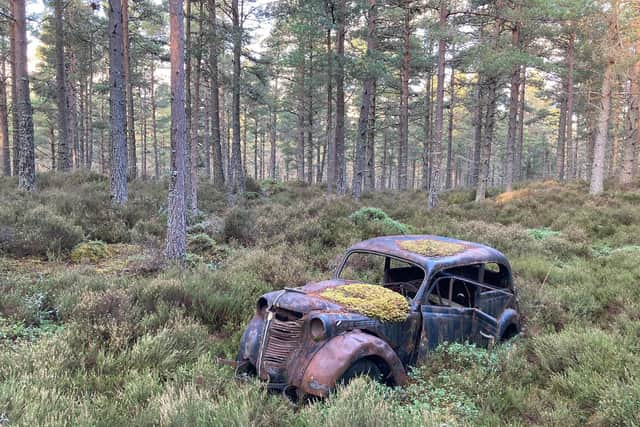Wildlife photographer finds '1950s' car abandoned in Scottish national park
Simon Eaves set off to the Cairngorms to try and capture one of Scotland’s rarest breeds, the Capercaillie, over the weekend. He will not disclose his exact location for fear publicity may lead to people disturbing the birds’ habitat.
Despite no success in finding what he set out for, the keen photographer instead came across an abandoned vehicle among the trees (pictured).
Advertisement
Hide AdAdvertisement
Hide AdAfter sharing an image of it on social media, commenters appear to have sussed out the make.
"It appears the car is a Left hand drive Opel Olympia which may have been bought back from Germany post war in the 50s there,” Simon said, after reading the comments on his picture.
"And there's suggestion it may have been ‘driven’ in there in the 60s as shelter for the forest planting squad. Although, I don't know the truth behind these facts.”
Simon has been a keen birder his entire life.
He moved to Scotland from Yorkshire about 20 years ago to work for a season with the RSPB at Loch Garten as part of Operation Osprey.


It was then when he spotted his first Capercaillie.
He has worked part time for a local Wildlife tour company called Speyside Wildlife in recent years which leads guided holidays to see the birds and other wildlife of the Speyside area and give guided wildlife tours globally.
Simon said he hasn’t seen a Capercaillie in more than two years due to their decline which is a result of many factors including climate changes and human disturbance.
He added: “I feel quite strongly about disturbance of wildlife. I'm sad and frustrated when I see people using our countryside without being mindful of nature, dogs off lead, watercraft on lochs and rivers, off road bikes, wild swimming, wild camping and campfires. Its not that any of these things are inherently bad for nature it just depends how and where individual people go about these outdoor activities, being thoughtful about the nature in the places we visit goes a long way to help preserve the wildlife.”